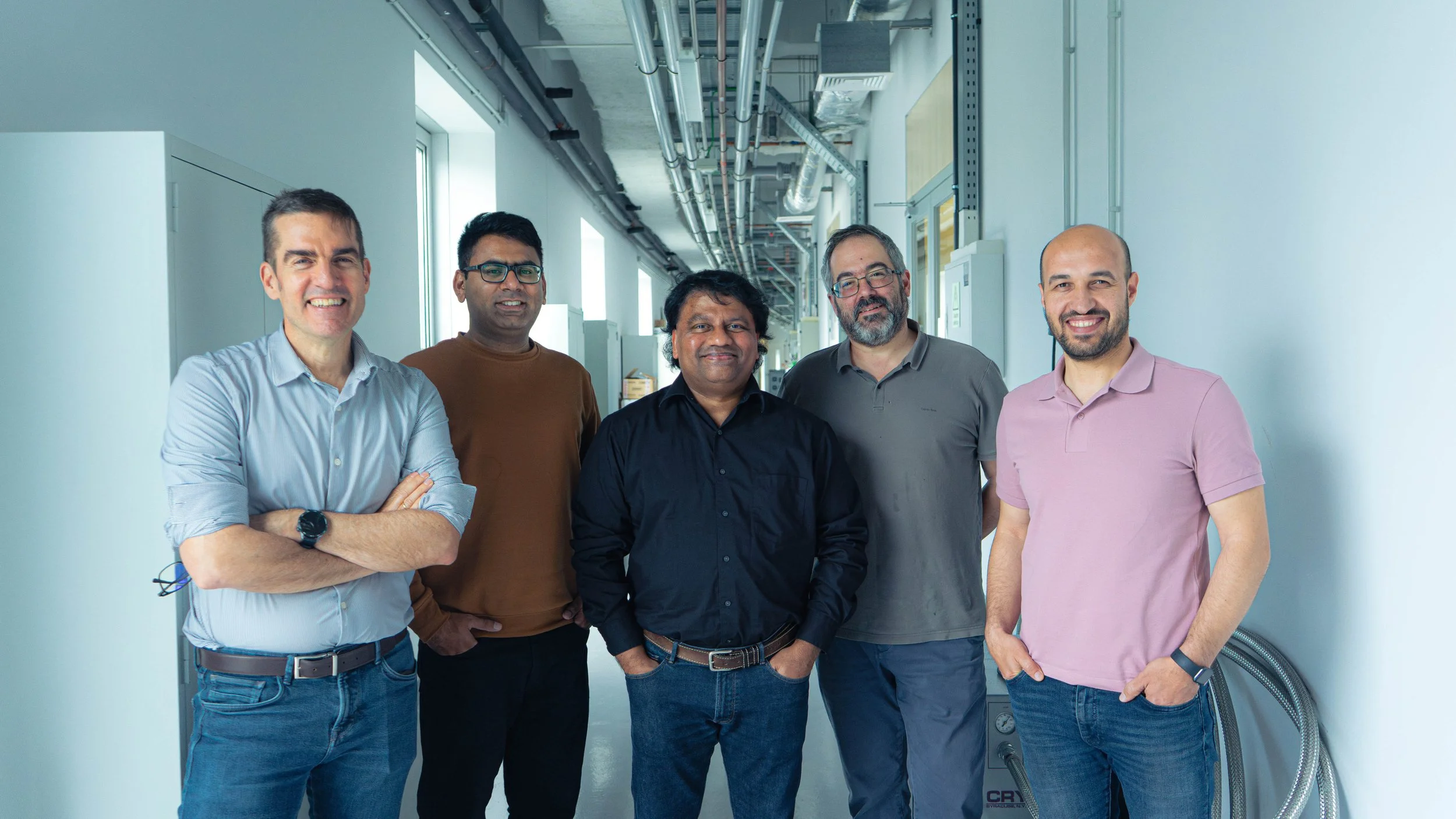New study: From Two-Dimensional Layers to One-Dimensional Nanotubes
Part of the research team: Joaquín Fernández-Rossier, Aqrab ul Ahmad, Francis Leonard Deepak, António Costa & Ihsan Çaha.
At the cutting edge of nanoscale innovation, scientists at the International Iberian Nanotechnology Laboratory (INL) in Braga, Portugal, have opened a new chapter in the story of confined magnetism. A recent study published in Communications Chemistry, part of Nature Portfolio journals, presents the first atomic-level understanding of high-quality, single-walled CrI3 nanotubes, a milestone in the dimensional control of magnetic materials.
What makes this breakthrough unique is the radial confinement of the iconic 2D ferromagnetic CrI3 within the narrow channels of multiwalled carbon nanotubes (MWCNTs). This architectural strategy converts a layered 2D van der Waals magnet into one-dimensional nanotubes, showcasing exceptional aspect ratios and structural coherence within the CNT host.
“This is more than just a structural innovation,” the researchers note. “It marks a conceptual shift demonstrating, for the first time, that a fully isolated, one-dimensional magnetic material can be constructed from a 2D van der Waals magnet.”
By pushing CrI3 to the brink of its dimensional limits, this work redefines our understanding of spin, structure, and confinement in next-generation magnetic quantum systems.
Exploring Magnetic States
This study raises new questions about magnetism at the nanoscale. By employing X-ray magnetic circular dichroism (XMCD) at the ALBA Synchrotron in Spain, the researchers observed unusual magnetic behaviour in the CrI3 nanotubes.
“Our XMCD results at ALBA synchrotron show that chromium atoms retain magnetism, but act like paramagnets with minimal remanence,” explains Aqrab ul Ahmad. “This behaviour hints at an intriguing suppression of long-range magnetic order, which, until now, has been unexplored.”
Theoretical Insight
Beyond experimental observations, the team’s theoretical analysis predicts an exotic new magnetic state that challenges conventional understanding.
“Our calculations predict an exotic radial magnetic state, driven by off-plane magnetic anisotropy,” says Joaquín Fernández-Rossier. “To our knowledge, no other material system exhibits this radial spin texture, a potential game-changer for quantum spintronics.”
Decoding the Interface
To unravel the intricate interfacial behaviour of these confined magnetic heterostructures, the research team turned to 4D scanning transmission electron microscopy (4D-STEM), a cutting-edge technique capable of resolving local charge distributions with atomic precision.
“Conventional methods like Raman spectroscopy, while informative, lack the spatial resolution needed to probe charge interactions in such multilayered carbon systems,” explained Ihsan Çaha. “With 4D-STEM, we addressed this critical gap and discovered a key insight: charge transfer is not delocalized throughout the nanotube walls but rather sharply confined to the interface between the innermost carbon layer and the CrI3 core.”
This spatially resolved insight is pivotal for understanding and engineering interfacial electronic and magnetic interactions in complex van der Waals heterostructures, where even angstrom-scale charge variations can drastically impact functionality. By overcoming the diagnostic limitations of earlier techniques, 4D-STEM emerges not just as a tool for visualization but as a problem-solving strategy essential for advancing 1D magnetic material design.
Towards Next-Generation Devices
Interestingly, while the CrI3 nanotubes are predicted to be insulating, the surrounding carbon nanotube shells remain conductive, forming a unique hybrid architecture that acts as conductive channels, ideal for magneto-resistive and spintronic applications.
This work expands the boundaries of layered magnetic materials encapsulation, combining 1D confinement with novel magnetism that could power next-generation magnetic sensors, quantum logic elements, and spin-based devices.
The research was conducted under the umbrella of the EU-funded FUNLAYERS Project, and led by Leonard Deepak Francis and Joaquín Fernández-Rossier. The core experimental and theoretical team at INL included researchers Ihsan Çaha, Aqrab ul Ahmad, Manuel Bañobre-López, and Antonio Costa, with collaborations from the ALBA Synchrotron and the Institute of Solid State Chemistry, Ural Branch of the Russian Academy of Sciences.



